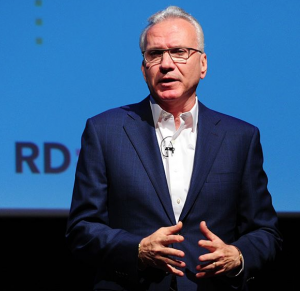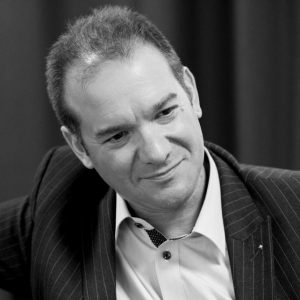The Expert View: How to Create More Humane Workplaces
Until recently, it was assumed that the business interest was on a collision course with employee wellbeing as well as social and environmental concerns. Yet, recent research results challenge this assumption. It turns out that you can secure superior financial returns through highly engaged staff displaying social responsibility.
In the past few years, we have seen encouraging moves towards a more purposeful and humane approach to business. But as pressure builds up to achieving results, a key question remains: are we losing the sense of humanity in our working lives? And what can business leaders do to create a more humane workplace?
1. Start seeing people as value creators

Vlatka Hlupic, author and business consultant
According to Vlatka Hlupic, considered one of the world’s leading authorities on leadership and organisational transformation and author of the acclaimed ‘Humane Capital – How to Create a Management Shift to Transform Performance and Profit’, the key difference between the concepts of human capital and humane capital is how they see the role of people:
“Human capital is about the skills and the knowledge that employees or people will have in an organisation as well as their cost – a replenishable resource, or a cost. Humane capital is about seeing people as sources of value creation grounded in human approaches, and humane values with a focus on people’s purpose compassion, and collaboration”, she said in an interview for Headspring’s Learning Rewired Podcast.
She argues that companies that just focus on profit maximisation neglecting people, cannot sustain their performance on a long-term basis:
“For companies that focus on people, their collaboration and the way they work together, numbers will take care of themselves helping them achieve sustainable performance”, she said. “Not just in terms of profit, revenues, KPIs, but they will be happier, more purposeful and productive, more engaging places, and take better care of the environment – a win-win for everybody.”
2. Listen empathetically

Mark Fritz, business professor
For leadership professor Mark Fritz, a more humane workplace starts with listening: “Humanity is about giving the people you are engaging with, your 100% attention”, he said.
“The complexity and pace of our daily lives is impacting all organisations. Listening is the key to not just selling, but to engaging your people too.”
To bring the concept of active and empathetic listening to life, Fritz suggests a “Nose In, Fingers Out” (or NIFO) approach. Instead of more traditional delegation approaches where managers tell team members what to do and how to do it, the NIFO approach is centred around asking questions and listening (nose in) and sharing stories and examples (fingers out),
“Listening values others and this is the key to bringing more humanity into everyone’s working lives. Your company’s effectiveness and the humanity in everyone’s working lives are driven by the quality of your conversations”, Fritz added.
Fritz’s views are shared by executive transformation coach Flooris Van Der Walt , who believes that a more humane workplace “is a given when the leaders want to connect with their people and listen to them”.
“When I am seen and heard, I am acknowledged as a human being with a mind and opinion”, says Van Der Walt
3. Create an ecosystem that supports collaboration

Andy Lopata, author and professional relationships strategist
Andy Lopata is a professional relationships strategist. In his opinion, as well as encouraging managers and leaders to become more humane, it is key to put in place a system that encourages true collaboration, where people feel secure.
“A humane workplace starts with the acceptance that nobody is perfect and that everyone is working towards the same goal”, he said. “Put in place policies that encourage collaboration over competition. Make it OK to say ‘I don’t know’ and to ask for help.”
When it comes to creating a safe environment for people to be honest and open about their limitations and values, business professor and consultant Matt Marsh has a similar view: “Ensure that people can bring their whole selves into the workplace. Without exception. No one should feel that being at work means they have to compromise their beliefs, needs, or ethics.”
According to leadership and decision-making expert Kriti Jain, compassion doesn’t mean that managers need to be lenient or accept a lower standard of results. On the contrary, a culture of excellence must be celebrated.

Kriti Jain, Expert on Leadership, Diversity & Inclusion, Organisational Change
“Many leaders I work with feel that compassionate management means they must also accept a certain level of mediocrity. Not really”, said Jain. “Leaders can cultivate an organisational culture that celebrates both excellence and empathy together.”
According to her, the key to finding the right balance between compassion, empathy, humanity, and business results is cultivating purpose. Once people have embraced the purpose of the business, they will naturally want to achieve that. “Empathy + Purpose = Thriving”, concluded Jain.
Related Resource: Sustainable Leadership Report

As well as mastering strategy and finance, business leaders today need to demonstrate they can do the right thing when it comes to their people and to major social, political and environmental issues. The Covid-19 crisis has made this clearer than ever. In this process, HR and L&D functions have become crucial to business survival and the growth of sustainable leadership. To undersand how leaders are dealing with these challenges and trends, we conducted major research on the topic, which you can download for free here.
Related Solution: Sustainable Growth Program
Headspring’s online Sustainable Growth program helps corporate leaders understand the fast-changing environmental, social, and governance (ESG) context in which they operate. It guides participants in how to design and implement practical and responsible strategies for sustainable development that maximise the benefit for the company and wider society.
Sustainable Leadership is a key aspect of this program. Participants learn about their role and purpose as a sustainable leader, and the different ways they can make a positive impact on society and business. As part of the final project, participants are encouraged to develop a strategic ESG plan, which can be further developed in the following three months. To find out more and enquire, click here.